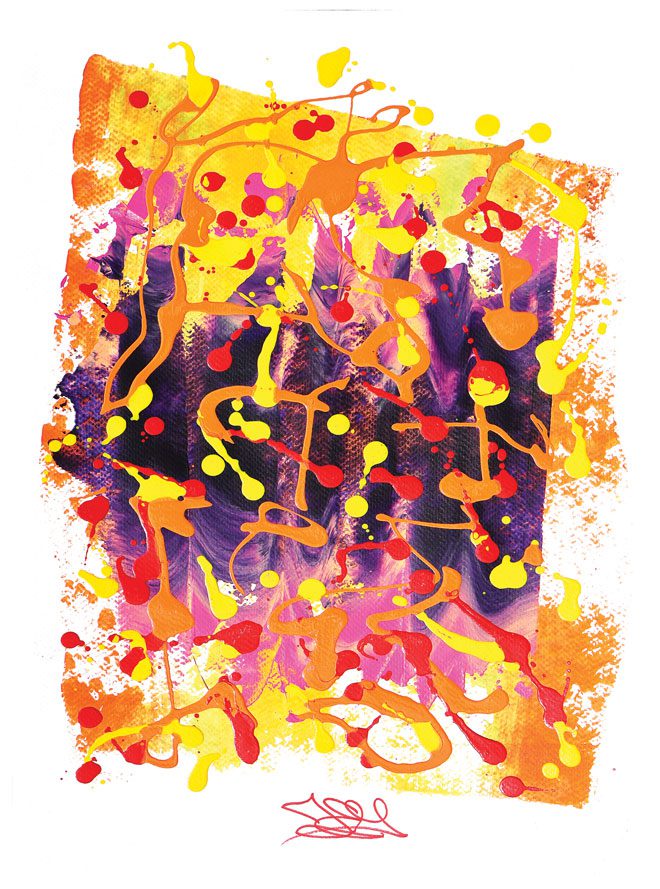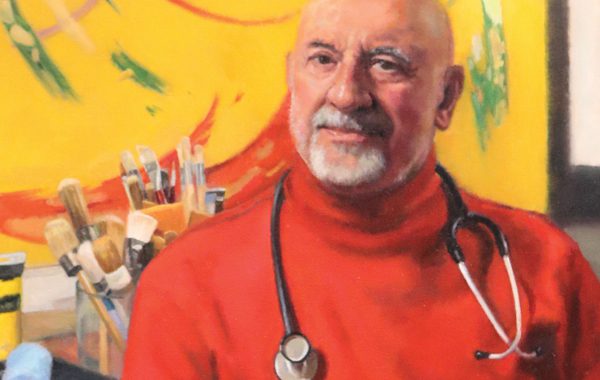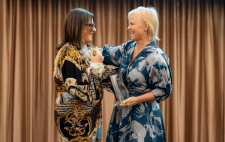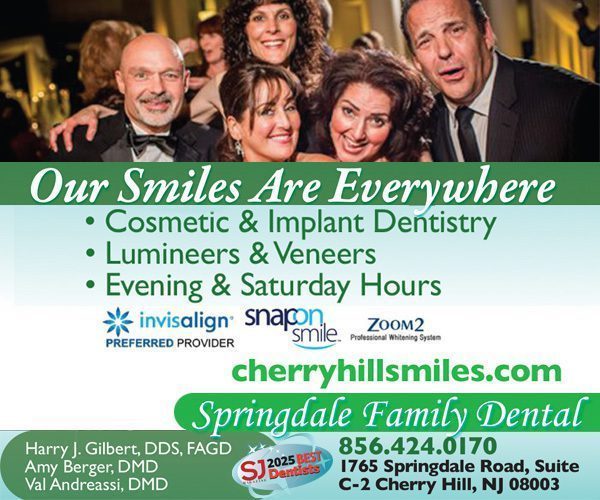
Artist: Dr. James George
Dr. James George’s life has a distinct “before” and “after” quality about it – with both parts of his extraordinary journey marked with many challenges and great joy.
Nearly a decade ago, the South Jersey emergency room physician opened his front door to a meter reader, fell backward, and entered a new world. The resulting brain and spine injury rendered him a quadriplegic, and he spent more than six months as an in-patient at then-Magee Rehabilitation Hospital in Philadelphia (now Jefferson Moss-Magee). Recovery was slow but “I kept moving in the right direction,” he says.
“As an emergency medicine physician, my whole medical experience was in acute care – treating patients in a brief period of time – so trying to contemplate too far ahead about what my recovery would entail and how much movement I could get back, was challenging,” he says.
During his first month at Magee – while he was still recovering from surgery to monitor pressure on his brain – Dr. George was introduced to art therapy as a way to improve his motor and cognitive skills. But this particular type of therapy did far more than that – art became a passion, a “miracle,” as Dr. George calls it – transforming him into an acclaimed abstract artist and passionate advocate for art as a healing modality.

Artist: Natalie Italiano
“I’m very grateful that art came into my life as a result of my accident,” says Dr. George, now 81. “That’s the miracle of healing – art possessed me in such a strong way. It’s been a gift. I’ve met so many wonderful people since I began making art. These experiences and connections have kept me grounded and committed to both creating art and supporting the arts.”
Before his accident, Dr. George – who holds both a medical and law degree – was working in the emergency department of what was then Underwood Hospital (now Inspira Health). He had also co-founded a malpractice law firm that represented doctors, nurses and other healthcare professionals, and he played a leading role helping the field of Emergency Medicine become an official medical specialty in 1979 – until then, ER doctors were generally trained in internal or family medicine. He is now a founding member of TeamHealth – a national association of more than 20,000 ER physicians based throughout the country.
“I was engaged in my career, but at the time of my accident I was pondering what I would do for my ‘second act,’” he says.
Today, Dr. George is well-known for his art, philanthropy and community service. In 2024, he donated funds to create a healing arts program at Rowan University, which this summer offered a free program at WheatonArts in Millville to veterans and active-duty service men and women. The glass arts program promoted creativity, camaraderie and emotional well-being among those who have served.
An “incomplete quadriplegic” who has partial functional use of his non-dominant left arm and leg, and limited use of his right arm and leg, Dr. George credits a young art therapist named Julie Nolan for helping shape the course of his post-accident destiny. He was about three weeks into his recovery with very limited physical and mental capabilities, when his daughter Abby suggested to Julie that her dad might be ready to try painting.

“I remember thinking, ‘How the hell am I supposed to paint if I can’t use my dominant right hand?’ But with art therapy, I felt a certain freedom not having to paint anything in particular.”
“It was amazing. There was no realism, no requirements – I could make whatever marks I wanted on the paper using whatever I wanted, including a fork.”
And so it began. Dr. George’s early paintings were dark, mostly black and white, but then he began using color, a key element of his paintings. By the time he was discharged as a patient in January 2017, Dr. George had done more than 125 paintings. Today, nearly 300 of his works are on display at the hospital.
“I was worried at first about being judged, but the reaction to my art was so positive, it inspired me to keep going,” he says. “My goal is to bring joy to people through my painting.”
His favorite medium is acrylic, which he enjoys for the vibrancy and versatility it brings to his work. And as he explains, his paintings are generally done in a very spontaneous manner: “It comes to me quickly and transports me – I lose track of time.”
Dr. George has produced three self-published books chronicling his journey as an artist over time; he’s currently at work on volume four, which will have an introduction by friend and fellow South Jersey glass artist, Paul Stankard.
“Art is deeply meaningful to me now. It challenges me and it makes me want to evolve,” says Dr. George. “It has changed my existence. Art has given me a purpose and an emotional grounding in color – there’s no question about it. I have a deeper appreciation of life and of people.”
As his passion for art grew, so did his belief in its ability to heal mind, body and spirit. He has funded art rooms at Virtua’s behavioral health programs for children. Last year, he received Virtua’s Humanitarian of the Year Award and was honored by the Inspira Health Foundation. He is also involved with several organizations benefiting local children, including the Boys & Girls Clubs of Gloucester County, which named him “Citizen of the Year” in 2018, and the Kingsway Learning Center, which provides educational and therapeutic services to students with multiple disabilities.
This fall, the sixth floor at Jefferson Moss Magee Rehabilitation Hospital Center City will be named the “James E. George MD & Family Creative Therapy Center” in his honor. Recognizing the need to provide long-term funding for the 83-bed hospital’s art therapy program, Dr. George and his family recently made the largest individual gift in the hospital’s history.
“I was oblivious to art therapy as a modality before my injury,” he says. “I see now how life-changing the arts can be.”
Dr. George says that, in many ways, he is a different person than before his accident.
“I always liked people, but I connect with them differently now. Being in a wheelchair has made me more friendly. I’m now a leftie in touch with my more sensitive, artistic side, so I’m in a different state of mind. And I’m comfortable with me as I am.”
“My life is full, and I thank God that he pushed me in a different direction. Now I focus on the moment in time where I find myself,” Dr. George says. “Life is short, and I choose to live in the positive. Art takes everyone to a deep place of appreciation. It has been an amazing gift in my life.”















